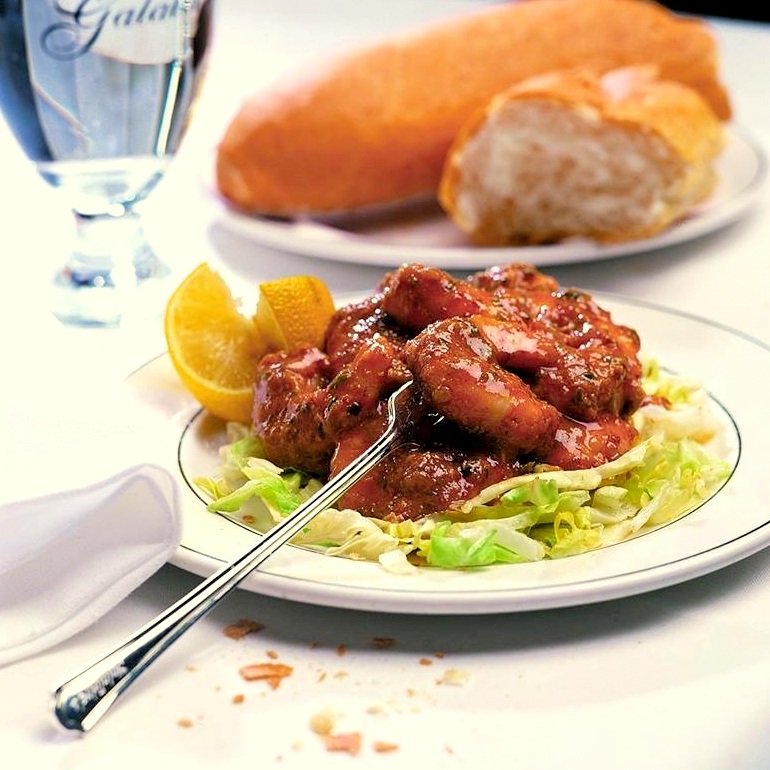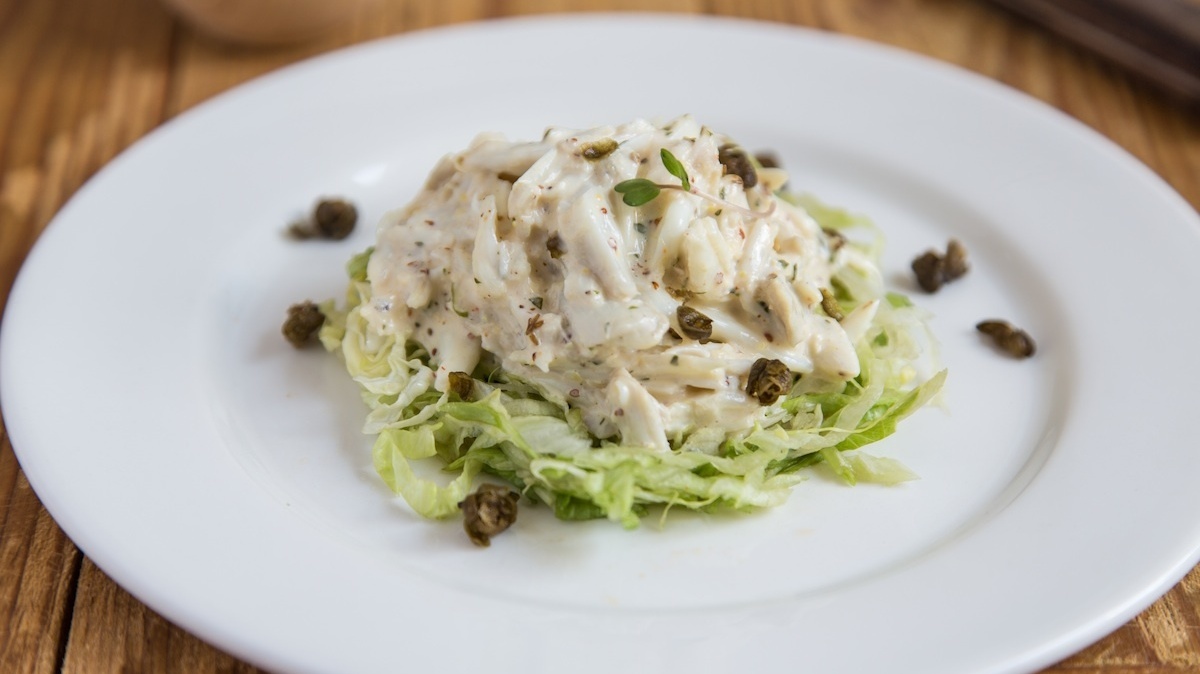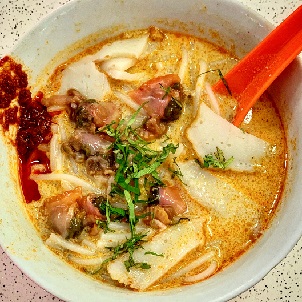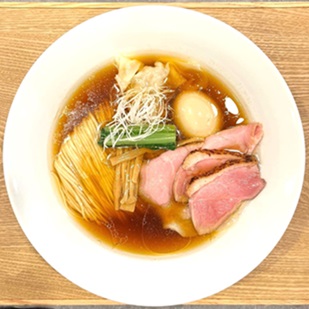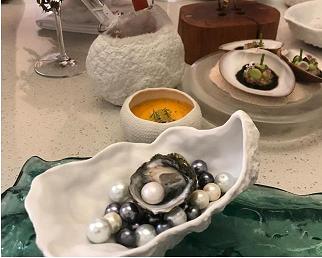Creole vs. Cajun: 8 Essential Eats in New Orleans
The Best of Louisiana’s Iconic Cuisines
Even for people who have lived in Louisiana all their lives, finding the definitive line between Creole and Cajun cuisine is tricky business. Dishes that one might think are distinctly Cajun, say jambalaya, can also have a Creole version and vice versa. But there are certain characteristics that help things seem a little less foggy. But first, to know the food, you have to know a little bit about the people who made it.

This oil painting by Agostino Brunia, circa 1764-1796, depicts free women of color with their children and servants in New Orleans. / Courtesy of Wikipedia.com
Creoles, or more specifically Louisiana Creoles, are descendants of French, Spanish, African and Native American colonists who settled in Louisiana during the 18th century, before the Louisiana Purchase. Cajuns, on the other hand, are descendants of Acadian exiles who settled here after the Great Expulsion -- when the British forcibly removed them from their homeland, now known as Nova Scotia and other Maritime provinces in Canada.
So, what's the difference in their cuisines? Ask a native and you will likely hear one of two things: Creole food is “city food” and Cajun is “country food,” or Creole has tomatoes and Cajun does not. While these descriptions are somewhat accurate, a few other details are important to note.

Creole cuisine evolved from classic European styles adapted to local ingredients. / Courtesy of SIWA
Creole cuisine is essentially French-inspired dishes that make use of the Gulf’s plentiful supply of seafood, think Oysters Rockefeller, Crabmeat Ravigote and Shrimp Remoulade. The “holy trinity” (peppers, onions and celery) -- the base of many local dishes -- is the Creole version of the French mirepoix. But there also is a heavy influence by other cultures such as Spanish (peppers), African (okra) and Native American (file or sassafras). Sounds like we’re making gumbo, doesn’t it?
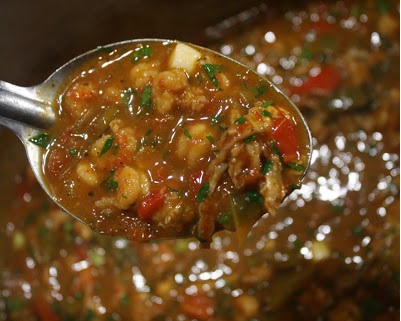
Cajun cuisine uses meats and seafood found in nearby swamps and bayous. / Courtesy of 2bp.BlogSpot.Com
Cajun cuisine, which includes gumbo and heavy use of the holy trinity, is more rustic in nature with extended family-sized, one-pot dishes employing such ingredients as salt pork, sausage, duck, catfish and crawfish. All of these meats and seafood were readily available in the swamps and bayous where many Acadians settled. Cajun cuisine also includes ingredients such as corn (thanks again to Native Americans) rice, cayenne pepper, pecans, satsumas and mirlitons (chayotes).
Now that we know the difference, who’s hungry?
The Essential Creole in New Orleans
1. Crabmeat Ravigote - Tableau
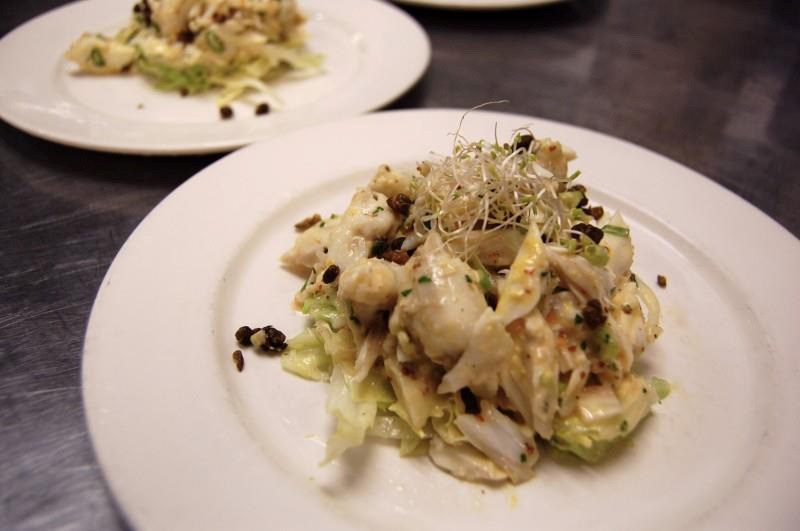
Crabmeat Ravigote at Tableau. / Courtesy of Tableau
Ravigote is a tangy, French sauce made with onion, Dijon, lemon juice, egg, cayenne and parsley, like vinaigrette, and it pairs fabulously with fresh, Louisiana blue crab in this traditional dish from Dickie Brennan's Tableau.
2. Shrimp Remoulade - Galatoire’s Restaurant
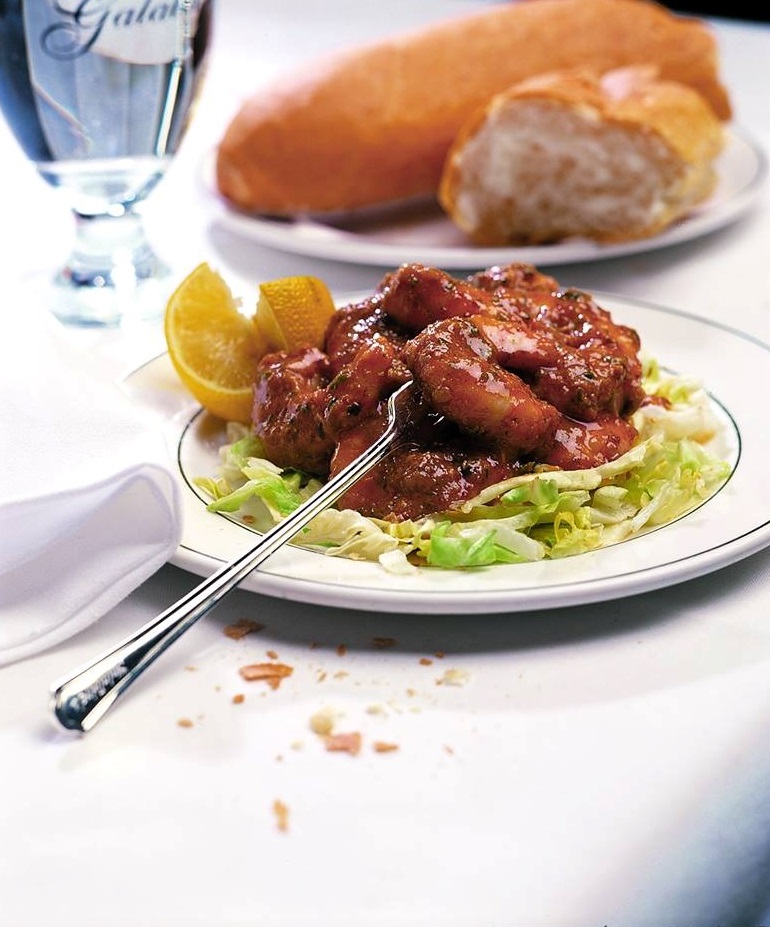
Shrimp Remoulade at Galatoire’s Restaurant. / Courtesy of Galatoire’s
Remoulade is another French condiment similar to the British tartar sauce. This version includes scallions, tomato puree, Worcestershire sauce, Creole mustard and horseradish. Many locals believe Galatoire's Shrimp Remoulade is the standard by which all other remoulades should be measured.
3. Eggs Sardou - Arnaud's Restaurant
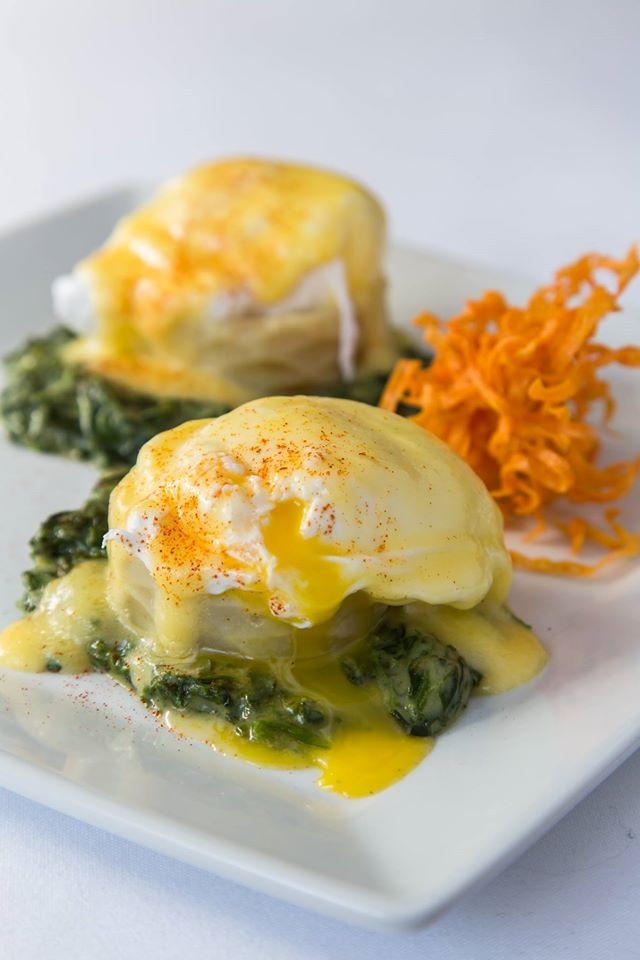
Eggs Sardou at Arnaud’s Restaurant / Courtesy of Arnaud’s
A version of Eggs Benedict, Eggs Sardou is made with poached eggs, creamed spinach, artichoke bottoms, English muffins and Hollandaise. The dish was named for French dramatist Victorien Sardou, who visited New Orleans, and Antoine's, where the dish was invented. Now the dish is offered in restaurants all over the city, including this particular rendition at Arnaud's Restaurant.
4. Creole Cream Cheese Ice Cream - The Creole Creamery
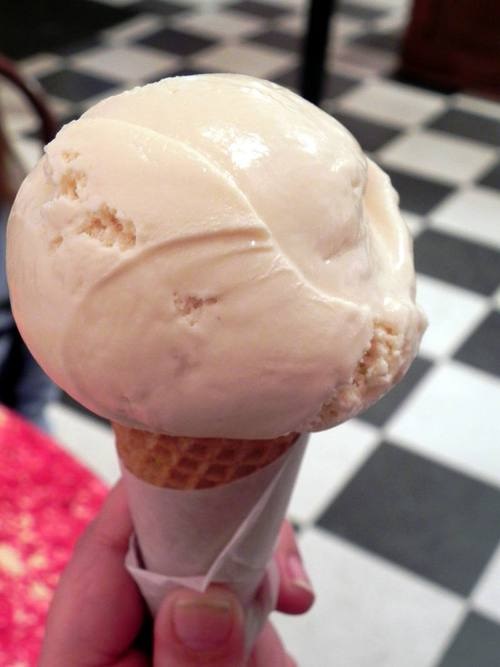
Creole Cream Cheese Ice Cream at The Creole Creamery. / Courtesy of Kim Ranjbar
Creole cream cheese is a form of farmer cheese that is traditional in New Orleans. It has a tangy, yet sweet flavor and is often mixed with sugar and fruit for local desserts -- including this delectable Creole Cream Cheese Ice Cream from The Creole Creamery.
The best Cajun in New Orleans
1. Gumbo Ya-Ya - High Hat Cafe
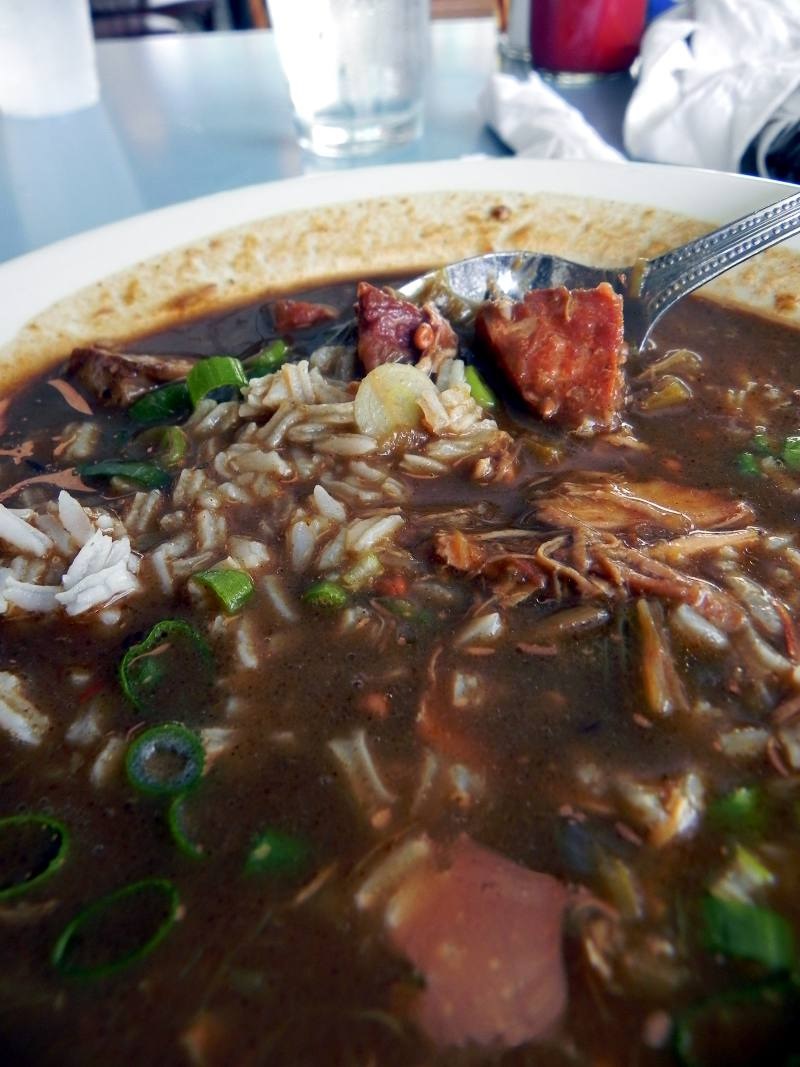
Gumbo Ya-Ya at High Hat Cafe. / Courtesy of Kim Ranjbar
Although there are Creole and Cajun gumbos, this one is definitely Cajun featuring a rich, dark roux, roasted chicken and Andouille sausage. High Hat Cafe is a fairly new restaurant on Freret Street, but the gumbo is definitely a classic.
2. Cochon de Lait - Coquette
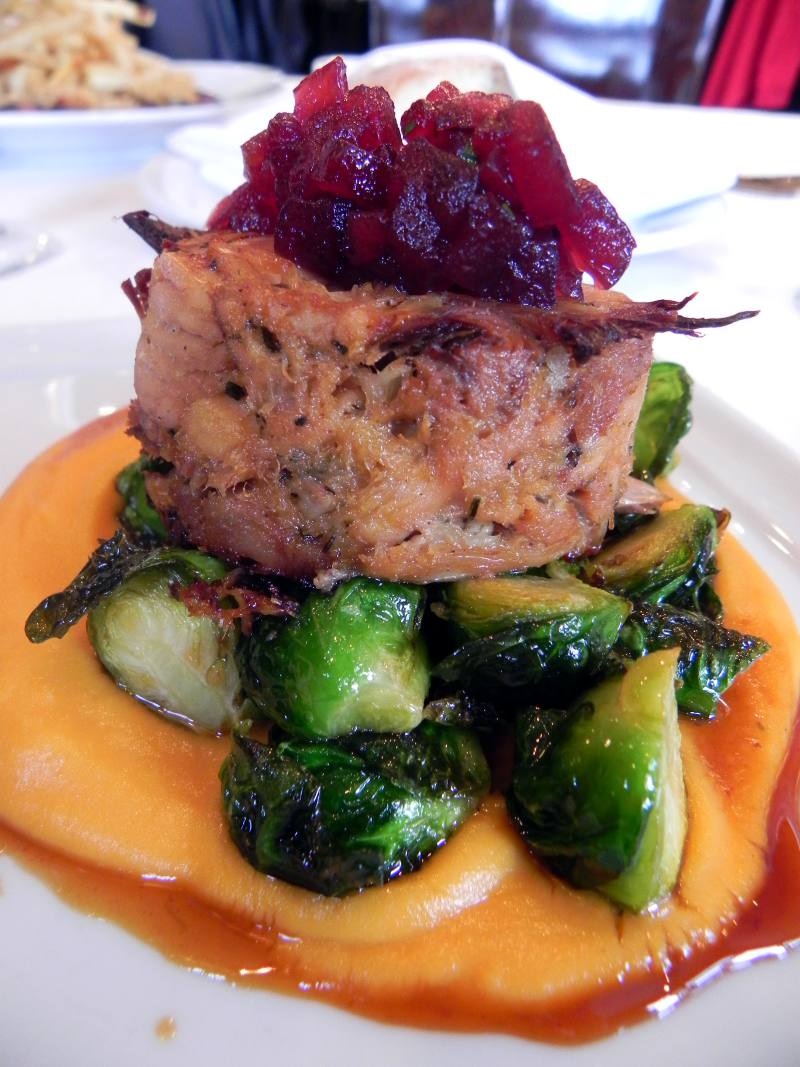
Cochon de Lait at Coquette. / Courtesy of Kim Ranjbar
Similar to the Spanish lechón, Cochon de Lait is a roasted, suckling pig. This decadent version at Coquette includes Brussels sprouts, sweet potato and apple marmalade. The menu changes frequently at Coquette (like a lot of modern restaurants), but it would be surprising if this dish doesn’t reappear in the future.
3. Boudin Balls - Toups’ Meatery
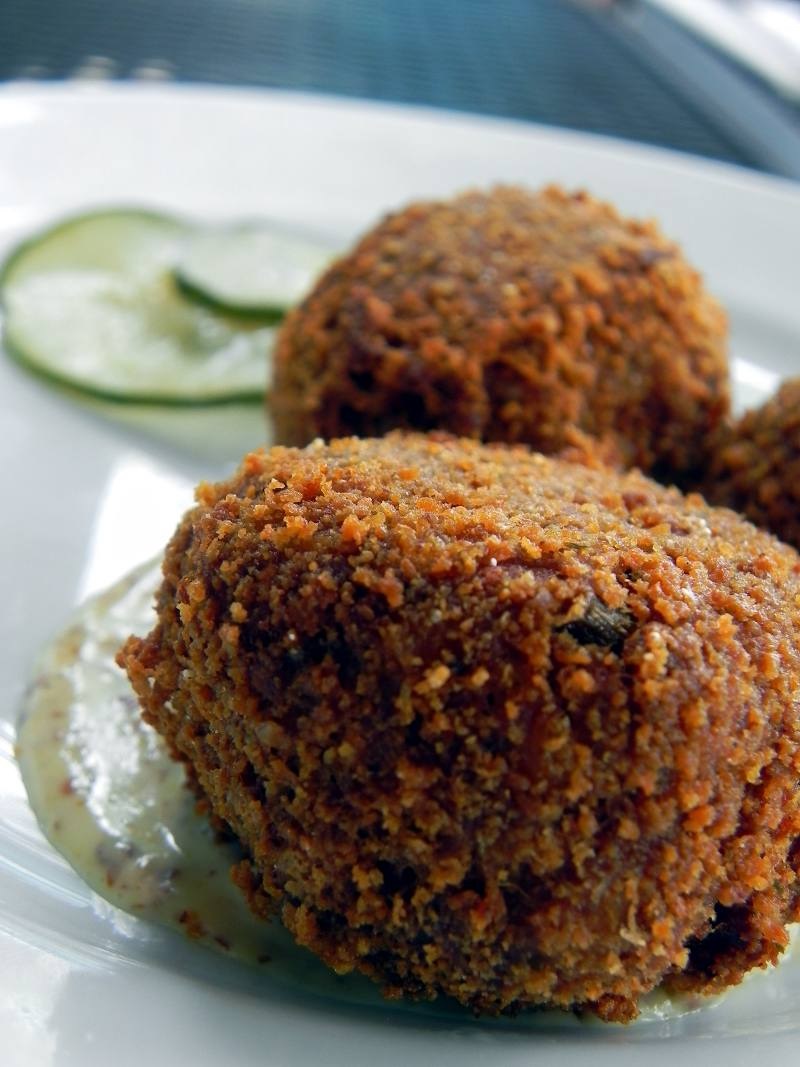
Boudin balls at Toups’ Meatery. / Courtesy of Kim Ranjbar
Cajun boudin is a mixture of cooked rice, pork, onions, peppers and other seasonings that are ground together and stuffed inside a sausage casing. Chef Isaac Toups at Toups’ Meatery makes his own boudin, but instead of keeping it in the casing, it's rolled into balls, dredged in cornmeal and deep fried.
4. Maque Choux - Jacques-Imo's Cafe
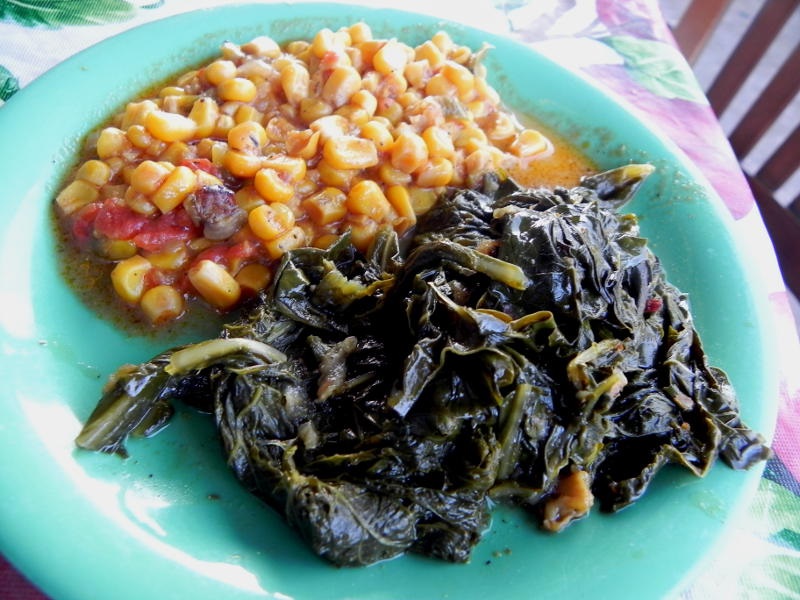
Maque Choux at Jacques-Imo’s Cafe. / Courtesy of Kim Ranjbar
Many restaurants in the city (including soul food spots) offer this simple, vegetable dish (pronounced “mock shoe”) believed to be influenced by Acadians and Native Americans. This colorful version from Jacques-Imo's Cafe includes corn, bell pepper, tomatoes, onion and garlic.
Category:
Recommended features by ExtremeFoodies



